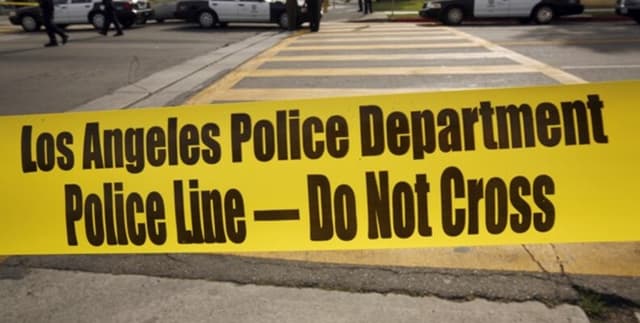Historical Crime Data for Los Angeles
Public Safety & Security
Tags and Keywords
Trusted By




"No reviews yet"
Free
About
This data reflects incidents of crime within the City of Los Angeles from 2020 to the present. Sourced from the Los Angeles Police Department, it provides a valuable resource for analysing crime patterns, affected communities, and high-risk locations. The data is transcribed from paper reports, so some inaccuracies may exist. To protect privacy, addresses are rounded to the nearest hundred block, and some location fields with missing data are marked with coordinates of (0°, 0°).
Columns
- DR_NO: Division of Records Number, the official file number for the incident.
- Date Rptd: The date the crime was reported (MM/DD/YYYY).
- DATE OCC: The date the crime occurred (MM/DD/YYYY).
- TIME OCC: The time the crime occurred, in 24-hour military format.
- AREA: A numerical identifier (1-21) for the LAPD Geographic Area or Community Police Station.
- AREA NAME: The name designation for the Geographic Area (e.g., "77th Street").
- Rpt Dist No: A four-digit code representing a sub-area within a Geographic Area for statistical comparison.
- Part 1-2: A numerical classification of the crime.
- Crm Cd: A numerical code indicating the specific crime committed.
- Crm Cd Desc: The definition of the crime code (e.g., "VEHICLE - STOLEN").
- Mocodes: Modus Operandi codes describing activities associated with the suspect during the crime.
- Vict Age: The age of the victim.
- Vict Sex: The gender of the victim (F: Female, M: Male, X: Unknown).
- Vict Descent: A code representing the descent of the victim (e.g., H: Hispanic/Latin/Mexican, W: White).
- Premis Cd: A code for the type of location where the crime took place.
- Premis Desc: The definition of the premise code (e.g., "STREET").
- Weapon Used Cd: A code for the type of weapon used, if any.
- Weapon Desc: The definition of the weapon code (e.g., "STRONG-ARM (HANDS, FIST, FEET OR BODILY FORCE)").
- Status: A code representing the current status of the case.
- Status Desc: The definition of the status code (e.g., "Invest Cont").
- Crm Cd 1: The primary and most serious crime code for the incident.
- Crm Cd 2: Code for a secondary, less serious offence, if applicable.
- Crm Cd 3: Code for a third, less serious offence, if applicable.
- Crm Cd 4: Code for a fourth, less serious offence, if applicable.
- LOCATION: The street address of the incident, rounded to the nearest hundred block.
- Cross Street: The nearest cross street to the incident location.
- LAT: The latitude coordinate of the incident.
- LON: The longitude coordinate of the incident.
Distribution
The dataset is provided in a single CSV file named
Crime_Data_from_2020_to_Present.csv with a size of approximately 81.51 MB. It contains 28 columns of data. The number of records is approximately 318,000.Usage
This data is ideal for spatial analysis, trend identification, and predictive modelling related to urban crime. It can be used to answer questions such as:
- Which communities are most affected by crime?
- Which specific locations have a history of criminal activity?
- What are the prevalent crime types in the city?
- What age groups are most and least affected by crime?
Coverage
The data covers crime incidents within the 21 geographic patrol areas of the City of Los Angeles. The time range for the incidents dates from 1 January 2020 to the present, with an expected weekly update frequency. Demographic information includes victim age, sex, and descent, though some records may have missing values for these fields.
License
CC0: Public Domain
Who Can Use It
- Urban Planners and Policymakers: To inform public safety initiatives and resource allocation.
- Data Scientists and Analysts: For exploratory data analysis (EDA), trend analysis, and building predictive models.
- Sociologists and Criminologists: To study the social dynamics and patterns of urban crime.
- Journalists and Researchers: To report on crime trends and support investigative stories.
Dataset Name Suggestions
- Los Angeles Crime Incidents 2020-Present
- LAPD Crime Report Data
- City of Los Angeles Crime Statistics
- Historical Crime Data for Los Angeles
- LA Urban Crime Patterns
Attributes
Original Data Source: Historical Crime Data for Los Angeles
Loading...
